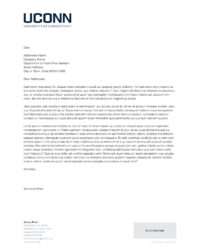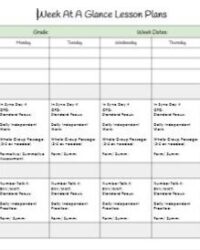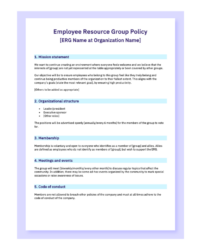Ever feel like planning lessons is a bit like piecing together a complex puzzle without the picture on the box? You’re not alone! Educators everywhere grapple with the challenge of creating engaging and effective lessons that truly resonate with students and lead to meaningful learning outcomes. It’s a noble pursuit, but it often feels like a constant juggle between curriculum demands, student needs, and the ticking clock.
That’s where a structured approach comes into play. Imagine having a clear roadmap that guides your lesson design, ensuring every element from objectives to assessment is thoughtfully integrated. This is the promise of a core instructional model, a consistent framework that brings predictability and purpose to your teaching. When you adopt such a model, you’re not just filling in blanks on a paper; you’re intentionally crafting an experience that maximizes student engagement and deepens understanding, making your teaching both more efficient and impactful.
Unlocking Teaching Potential: The Power of a Standardized Model
A core instructional model serves as the bedrock for effective teaching and learning across an entire school or district. Think of it as the shared language of instruction, ensuring that while each teacher brings their unique personality and expertise to the classroom, there’s a common thread running through the educational experience. This consistency helps students immensely, as they become familiar with the flow and expectations of lessons, regardless of the subject or the teacher. It reduces cognitive load on students because they know what’s coming next, allowing them to focus more on the content itself.
For educators, this common framework is a game-changer. It provides a reliable blueprint, reducing the time spent reinventing the wheel for every single lesson. Instead of starting from scratch, teachers can focus their creative energy on differentiating instruction, crafting compelling activities, and addressing individual student needs. It also fosters a collaborative environment among colleagues, as everyone is working from the same playbook, making professional development more targeted and peer feedback more constructive. Imagine discussing a lesson plan with a colleague, and both of you immediately understand the structure and intent because you share a common model.
Beyond individual classrooms, a core instructional model helps ensure curriculum alignment from one grade level to the next. It creates a seamless progression of learning, making sure that students build upon prior knowledge and skills systematically. This continuity is vital for long-term academic success. When everyone adheres to a similar instructional approach, it becomes much easier to identify areas where students might be struggling across subjects or grades, allowing for more proactive and effective interventions.
Ultimately, adopting a robust core instructional model lesson plan template isn’t about stifling creativity; it’s about providing a strong foundation that empowers it. It frees up mental space for teachers to innovate within a proven structure, leading to more engaging and impactful lessons. This leads directly to why a well-designed core instructional model lesson plan template is such an invaluable tool for every educator.
Essential Elements of an Effective Core Instructional Model
- Clearly Defined Learning Objectives: What will students know and be able to do by the end of the lesson? These should be specific, measurable, achievable, relevant, and time-bound.
- Engagement and Hook: How will you grab students’ attention and activate prior knowledge?
- Direct Instruction: Explicit teaching of new concepts, skills, or information.
- Guided Practice: Students apply new learning with immediate feedback and support from the teacher.
- Independent Practice: Students work autonomously to reinforce understanding and skills.
- Assessment: How will you check for understanding throughout and at the end of the lesson?
- Closure: A summary of key learning and a look ahead to future lessons.
Adapting Your Template for Diverse Learners
While the template provides structure, its true power lies in its adaptability. Consider how you can modify each section to meet the needs of all your students, whether through differentiated materials, varied grouping strategies, or alternative assessment methods. The framework is there to support your teaching, not constrain it.
Putting Your Core Instructional Model Lesson Plan Template into Action
Once you have a core instructional model lesson plan template, the real work begins: bringing it to life in your classroom. This isn’t just about filling in boxes; it’s about thoughtfully considering how each phase of the lesson will unfold to maximize student learning. Start by immersing yourself in the learning objectives, asking yourself what the most effective sequence of activities would be to guide students towards mastering those goals. Think about what your students already know and what potential misconceptions they might bring to the table, planning your initial engagement and direct instruction accordingly.
Consider the transitions between each phase of the model. How will you move from direct instruction to guided practice smoothly and efficiently? What questions will you ask to check for understanding along the way, rather than waiting until the very end? The template encourages you to be proactive in your planning, anticipating student responses and potential challenges. It also prompts you to consider how technology can enhance learning at different stages, whether it’s through interactive simulations during direct instruction or digital tools for independent practice.
Perhaps most importantly, using a standardized template encourages reflection. After teaching a lesson, take a moment to review how each component of your core instructional model played out. What worked well? What could be improved for next time? This iterative process of planning, teaching, and reflecting is how you truly refine your craft and ensure that your lessons are consistently impactful. It transforms lesson planning from a chore into a powerful tool for continuous professional growth.
- Review objectives thoroughly before beginning.
- Plan engaging activities for each stage: introduction, direct instruction, guided practice, independent practice, and closure.
- Allocate appropriate time for each segment, but be prepared to adjust.
- Prepare all necessary materials and resources in advance.
- Think about potential student questions or misconceptions and how you will address them.
- Integrate differentiation strategies for various learning styles and needs.
- Plan for formative assessment throughout the lesson to check for understanding.
- Reflect on the lesson’s effectiveness and make notes for future improvements.
Embracing a systematic approach to lesson planning profoundly impacts the classroom environment. It brings a sense of calm and purpose to your teaching, allowing you to focus on the dynamic interactions with your students rather than scrambling to figure out what comes next. This organized approach translates directly into a more structured and predictable learning environment for students, fostering a sense of security and allowing them to engage more deeply with the content.
Ultimately, the consistent application of a well-designed core instructional model elevates the entire educational experience. It empowers teachers to deliver high-quality instruction with confidence and clarity, leading to significant improvements in student comprehension, engagement, and academic achievement. It’s an investment in both your professional growth and the success of every student in your care.


